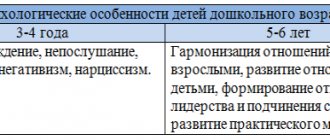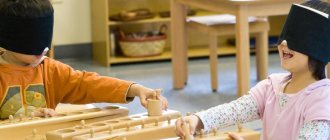It's a disaster when children get sick. Their fragile body is struggling, and we are trying our best to help the child: we examine him with the best specialists, get effective medicines, and try to ensure peace.
All this is correct in the complex course of the disease. However, there are still a number of points that escape our attention. Thus, the psychophysiological characteristics of the child’s body play a very important role. And this means that recovery largely depends on the psycho-emotional state of the child. If in adults more than 70% of diseases have a psychosomatic basis, i.e. are the body’s reaction to our emotional problems, then children often “respond” with illness to the anxiety and concern of their parents. And this is exactly the state we find ourselves in when children are sick. This negative emotional background interferes with recovery.
Another feature of a child’s body is the constant growth of organs. Consequently, those muscles to which a stronger blood flow is directed, i.e., to organs that are in motion, develop more intensively. In addition, it is known that the muscular system in early life is closely related to the main regulatory mechanisms. Limited movement negatively affects not only the diseased organ, but also the nervous, endocrine and neurotransmitter systems as a whole. Restriction of movements (the child is sick or has just recovered and needs rest) affects posture, weakens the functions of breathing and blood circulation. Passivity in movement leads to a decrease in the flow of irritations perceived by the nerve endings of the skin, muscles, joints, in the visual and auditory analyzers, going to the cerebral cortex. As a result, disorders of the central nervous system and internal organs may develop: emotional tone decreases, the neuromuscular system is weakened, and the cardiovascular and respiratory systems work weaker. This means that the body as a whole is weakened, which leads to more frequent diseases.
These observations about the role of movement in human development and health are reflected in an entire field of medicine - therapeutic and preventive physical education. However, the child’s psyche, especially at an early age, is structured in such a way that it is almost impossible to force the child to purposefully perform any, even the most useful, exercises. The child should be interested in studying. That is why we present adapted, game-based exercises for health improvement and disease prevention. Their effect is not only in the treatment of children, such games-exercises contribute to comprehensive, harmonious physical and mental development, the formation of necessary skills, coordination of movements, dexterity and accuracy.
During the game, unexpected, funny situations often arise. This causes sincere joy in both children and parents. A relaxed, cheerful atmosphere does not allow the child to “go away” into illness, allows parents to show more attention to him and increases joint communication with children in an atmosphere of love and care. This is a very powerful therapeutic factor.
It should be noted that the healing effect of games is possible only with frequent and long-term exercise (3 - 4 months, 2 - 3 times a day).
Games for diseases of the cardiovascular system
“Finger on finger”
Goal. Balancing nervous processes, strengthening inhibitory reactions, performing actions on command, coordinating hand movements.
Progress of the game. The child is sitting in front of you. He repeats your movements to your song:
Finger on finger, knock and knock, (Repeat 2 times)
Clap, clap, clap, clap! (Clap their hands)
Stomp your feet, stomp! (Repeat 2 times)
Hid, hide (Cover your face with your hands)
Finger on finger, tap and tap. (Repeat 2 times).
“Corrective and recreational games” (consultation for parents)
Consultation for parents on the topic:
"Corrective and recreational games"
The goal is to involve the family in preparing to improve the pedagogical culture of parents in matters of healthy lifestyle, familiarization with games and exercises to improve the health of children, and dissemination of family experience in leading a healthy lifestyle.
It is necessary not only in kindergarten, but also at home in everyday life to create the necessary conditions for the correct full physical development of the child:
general strengthening of the body (rational nutrition, prolonged exposure to fresh air, varied physical activity,
· choosing the right shoes for a child,
· massage,
· carrying out hardening procedures (barefoot walking on various surfaces, foot baths),
· special exercises to strengthen the muscles of the feet and toes,
· use of foot exercise equipment, including non-traditional equipment that can be easily made at home, and much more. etc.
Games for developing correct posture
The basis for the prevention and treatment of poor posture is general training of the child’s body. The objectives of the games include: strengthening the musculoskeletal system, strengthening the muscular “corset” of the spine, improving respiratory functions and the cardiovascular system.
Game "Visiting the Bear"
Having placed a bear toy on a high cube and made a slide from a long board placed on a gymnastics wall, the adult says:
Nastya (child's name) and Seryozha
They often go down the hill to see the bear.
The child enters the slide (you can use the slide on the playground in the yard, you just need to be careful and help the child climb to a height of about a meter), then runs down it and runs up to the bear, pets it and sits down to rest. An adult needs to carefully monitor the child's posture.
Purpose of the game: development of dexterity, speed of reaction and movement, sense of balance, coordination of visual and auditory analyzers, stable attention.
Game "Swing-carousel"
Parents lift the child in a supine position to the level of their waist. One holds the child under the armpits, the other - by both legs, and swings him in an upright position with the words: “Swing, swing, swing.” Then one of the adults continues to hold the child under the arms (the other lets go) and spins with him to the right and left (it turns out to be a carousel) with the words: “The carousels have flown.” It is advisable to play the game with rhythmic music. The game is played in the final phase of classes, when the child feels tired.
Purpose of the game: relaxation of the trunk muscles, improvement of the vestibular apparatus.
Health games for diseases of the nose and throat
For diseases of the upper respiratory tract, it is necessary to restore nasal breathing. With rhythmic, full exhalation, nasal breathing, the respiratory muscles are better relaxed and the smooth muscles of the bronchi are reflexively relaxed. When playing games with children, it is necessary to simultaneously monitor the correct posture and lip closure.
Game Owl-Owl"
Children sit in a semicircle in front of an adult. At the adult’s signal “day,” the “owl” children slowly turn their heads left and right. At the signal of night, the children look forward and flap their arms - “wings”. Lowering them down, they say protractedly, without tension: “U-ufff.” Repeat two to four times.
Purpose of the game: development of hand correction with respiratory movements of the chest, improvement of breathing functions (deep exhalation).
Games for flat feet
Flat feet most often occur in weak, physically poorly developed children. Often the load on the arches of the feet of such children is excessive. The ligaments and muscles of the foot become overstrained, stretched, and lose their springy properties. The arches of the feet flatten, droop, and flat feet occur. Therefore, games should be selected in such a way that the exercises strengthen the ligamentous-muscular apparatus of the lower leg and foot, contribute to the overall health of the body and develop the skill of proper walking.
Game “Bring it, don’t drop it”
The players sit on chairs. Everyone has a sheet under their feet. You need to grab the sheet with your toes and drag it in any way (jumping on one leg or all fours) to the opposite end of the hall. Repeat the same with the other leg. The one who does it faster without dropping the sheets wins.
Purpose of the game: strengthening the muscular-ligamentous apparatus of the feet, developing dexterity.
Game as a form of correctional work with primary schoolchildren
Game as a form of correctional work with primary schoolchildren
The era of childhood - that’s what D.B. called it. Elkonin two successive and closely related periods in child development - preschool and primary school. At the junction of these periods, children not only develop new psychological formations and the social situation of development changes, but also the leading types of activity change: play activity gives way to educational activity. But at school, games still occupy a significant place in a child’s life, performing,
As a form in which the content of a new activity (learning) can be most successfully absorbed;
As an emotional support for the individual, facilitating adaptation to school conditions and facilitating psychological comfort;
As an element of creative self-expression, manifestation of independence and activity of a student among his peers.
Certain and significant changes in the nature of the game of younger schoolchildren: the game begins to be subordinated to educational activities, etc.
At the same time, the game retains its main features, which fundamentally distinguish it from other types of activities: voluntary participation of participants, initiative, proceeding within a certain and time frame, unpredictability of development and results, creativity, illusoryness.
The desire to learn and the desire to play coexist peacefully in children throughout their early childhood. In games, elementary school students, just like preschoolers, realize not only a variety of impressions and knowledge, but also spiritual needs, which opens up wide opportunities for adults to use game resources in order to optimize the process of their education.
The recent processes of formation of a system of social-psychological-pedagogical assistance and support for childhood allow us to substantively discuss and study another aspect - the place of play in solving problems of prevention, diagnosis, and correction of undesirable variants of child development.
Play and correction of deficiencies in the social and personal development of younger schoolchildren.
The history of the implementation of diagnostic and correctional functions of children's play shows that S. Freud was at the origins of the development of this issue. He considered play as a method of cognition and a method for correcting the development of a child’s personality. “Symbolic activity. In which the child, being freed from pressure and prohibitions from the social environment, expresses unconscious impulses and drives in a special form with the help of toys, playful actions with them and roles.”
In the 30s of the twentieth century. A new direction in psychotherapy has emerged - play therapy. It was intended to work with children who have experienced any traumatic events. Another direction was play therapy for relationships, which proclaimed the need to treat the child as an individual. Possessing inner strength and the ability to constructively change one's behavior.
At the present stage, play therapy is presented in two forms - directed (directive) and non-directive (non-directive) play therapy. The differences between the two lie in the functions and role of the play therapist. If, as part of directed therapy, he discusses with the child his feelings, emotions, actions with toys, i.e. plays an active role, then in the second option the child is given complete independence; in the game he realizes himself, his shortcomings and advantages, overcomes his difficulties and overcomes conflicts.
It is customary to distinguish between individual and group forms of organizing gaming correctional influence. The main indications for group play therapy are difficulties in communication, voluntary regulation of behavior and activity, emotional problems, and fears. In cases where children, in addition to the problems mentioned above, have an undeveloped need for communication, a current stressful state, etc., group therapy should be preceded by its individual form.
The use of play therapy in working with primary schoolchildren is the work of a specialist who has undergone appropriate training (educational psychologist, practical psychologist, psychotherapist, special education teacher). At the same time, the teacher is recommended to use in his teaching activities those elements of types of therapy that are simple in technique, but effective in terms of developing adequate behavioral attitudes and self-esteem of students, improving communication skills, relieving emotional stress, and developing creativity.
Play and correction of difficulties in the cognitive activity of younger schoolchildren
For a primary school teacher, a game can become one of the tools for developing school-significant psychological and psychophysiological functions of students, activating their cognitive abilities, and cultivating a sustainable interest in and need for intellectual activity.
P.F. Kapterev pays special attention to the importance of games in educating schoolchildren's concentration, observation, intelligence, resourcefulness, creativity, improving organs, thinking and logical operations (analysis, synthesis, induction, etc.).
Modern scientists emphasize that the game helps the development of students’ cognitive abilities, and can also serve as an effective means of overcoming difficulties in this development, a “generator” of the process of psychological and pedagogical correction. Provided the correct methodological instrumentation is used, the game encourages students to “force their thoughts” and easily and freely stimulates them to understand the world. S.A. Shmakov believes that the very name of the games used for this purpose - intellectual, mental, educational, didactic - sounds encouraging and emphasizes their appeal primarily to the intellect, the development of all properties of the mind and stimulation of cognitive activity of children. Such games can be built on educational and non-educational material and included in the structure of any lesson on any subject. Most didactic games are based on competitiveness (who knows more? Who can name it more accurately? Who is the most observant?) and can be carried out in the form of an individual or team championship among students.
So-called leisure intellectual games also have significant potential for cultivating intellectual activity, curiosity, and broad cognitive motives. These include the games “What? Where? When?”, “Brain Ring”, “Field of Miracles”, etc.; “Project Defense”, “Tournament of Experts”; travel games “To the Land of Fairy Tales”, etc. The correctional, developmental and didactic effect of these games is to create conditions that give children the opportunity to enjoy expanding their horizons and the ability to use their knowledge; they model life situations of struggle and competition, identify the personal qualities of the participants and unite them.
Educational computer games are also an effective means of improving functions and processes that are significant for educational activities. They can be successfully used in correctional and developmental practice; it is only important to remember the need for strict adherence to sanitary and hygienic standards.
Despite the “pleasantness and ease”, “various usefulness” that intellectual and cognitive games bring to the correctional and developmental process, teachers should be warned against being overly enthusiastic about them. Mental stress during these games is often accompanied by prolonged static tension and low mobility of students, therefore games must be dosed and rationally integrated into the life activity of younger schoolchildren, alternating with periods of predominantly physical activity and high physical activity of children.
Play and recreational work with primary schoolchildren
Children's play has another important function - therapeutic and recreational. The use of outdoor, sports or special recreational games should become an integral component of the program of correctional and developmental work with primary schoolchildren and contribute to their physical development, health promotion, and improvement of neuropsychic regulation.
The physical and mental components in these games are closely related. Thus, in outdoor and sports games, children not only realize their need for movement, expend accumulated energy and improve basic motor skills, but also learn, on the one hand, initiative, independence, perseverance, and on the other, the ability to control oneself and read with partners , coordinate your actions with the actions of other players. Such games are a good means of training depending on changing circumstances, but in accordance with a certain plan for switching attention and developing such qualities as flexibility.
Thus, an analysis of the correctional and developmental resources of children's games leads to the conclusion about their great significance and effectiveness in solving the problems of prevention, diagnosis and correction of problems in the social, personal, cognitive and physical development of primary schoolchildren. A correctly selected, appropriately and skillfully conducted game should be considered as important an element of educational work in primary school as a lesson. Consequently, play should be present in the daily routine to the extent that it is necessary to create a “harmonious combination of mental, physical and emotional stress, correction and stimulation of all aspects of child development.





